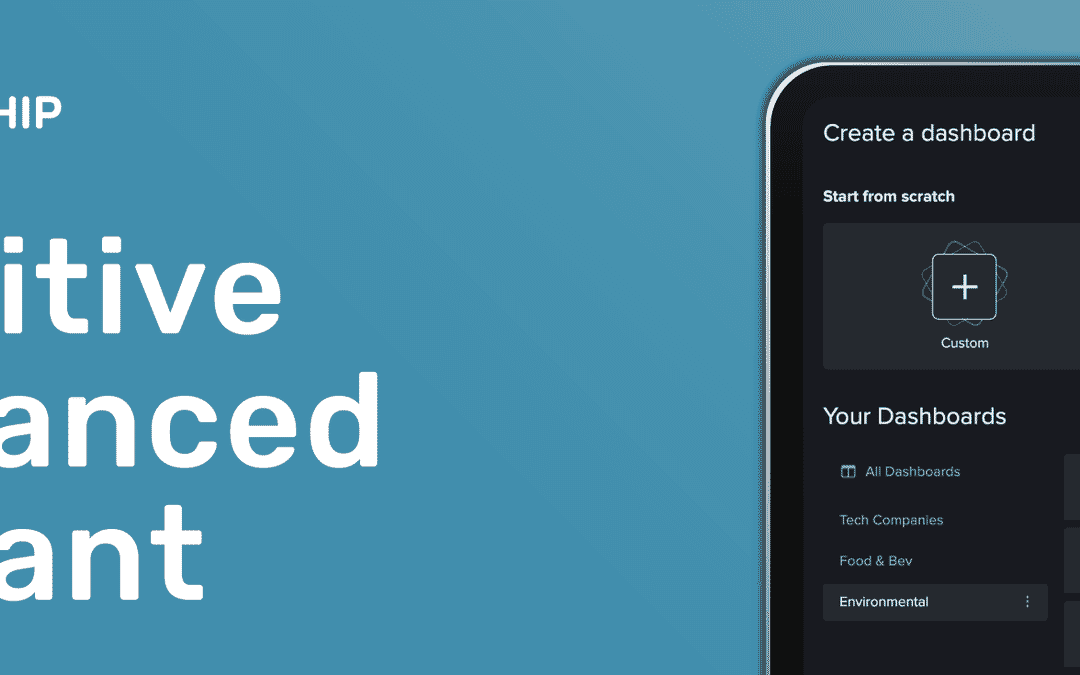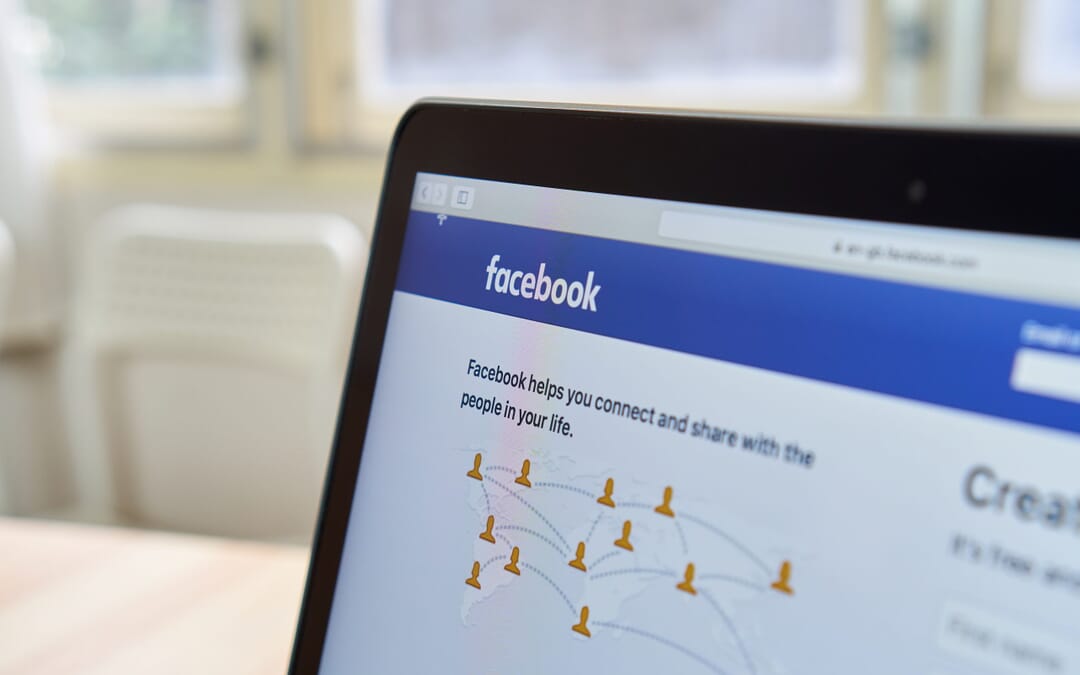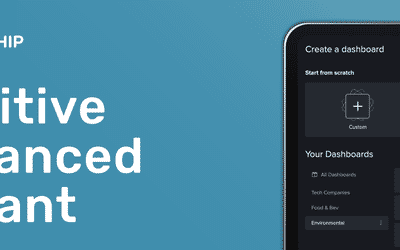We recently completed a comprehensive study on the anatomy of a reputation crisis using our data, and we’re including some of the highlights here.
We looked back at five different types of brand crisis – data breaches, lawsuits, product recalls, executive behavior, and racial tension in the workplace. Each of these has its own characteristics in how the stories often break, how much engagement they get with the public, and how much the media writes about them.
And then there are the exceptions that prove the rules too. For each crisis type, we looked at a handful of the prominent examples from 2018-2021. One trend we have seen is that the crises from the last 18 months or so have often been much bigger than their predecessors, as we live in a more networked age, and individual crises can stem from much broader conversations that we are approaching digitally.
Of course, this analysis is not exhaustive, but features a group of representative companies who had prominent crises in the time period we examined.
Let’s look at some of the highlights. Let’s begin with data breaches.
Data breaches as reputation crisis
We began by looking at five of the most widely covered data breaches in recent memory.
As noted, this report covered 2018 through 2021, and as such does not include the original Equifax hack, which was one of the most engaged hacks of all time. However, arrests for the Equifax breach were made in 2020, so we have included the coverage of those in this analysis.
We examined the Capital One breach, the Singtel hack, the Equifax charges, and the Under Armour/MyFitnessPal hack over the same time period of a week. As is obvious from the chart, the Capital One hack was the most resonant with the public by a considerable distance, lasting several days. Singtel is an example from this year that received mostly local coverage, and did not resonate much beyond Singapore.
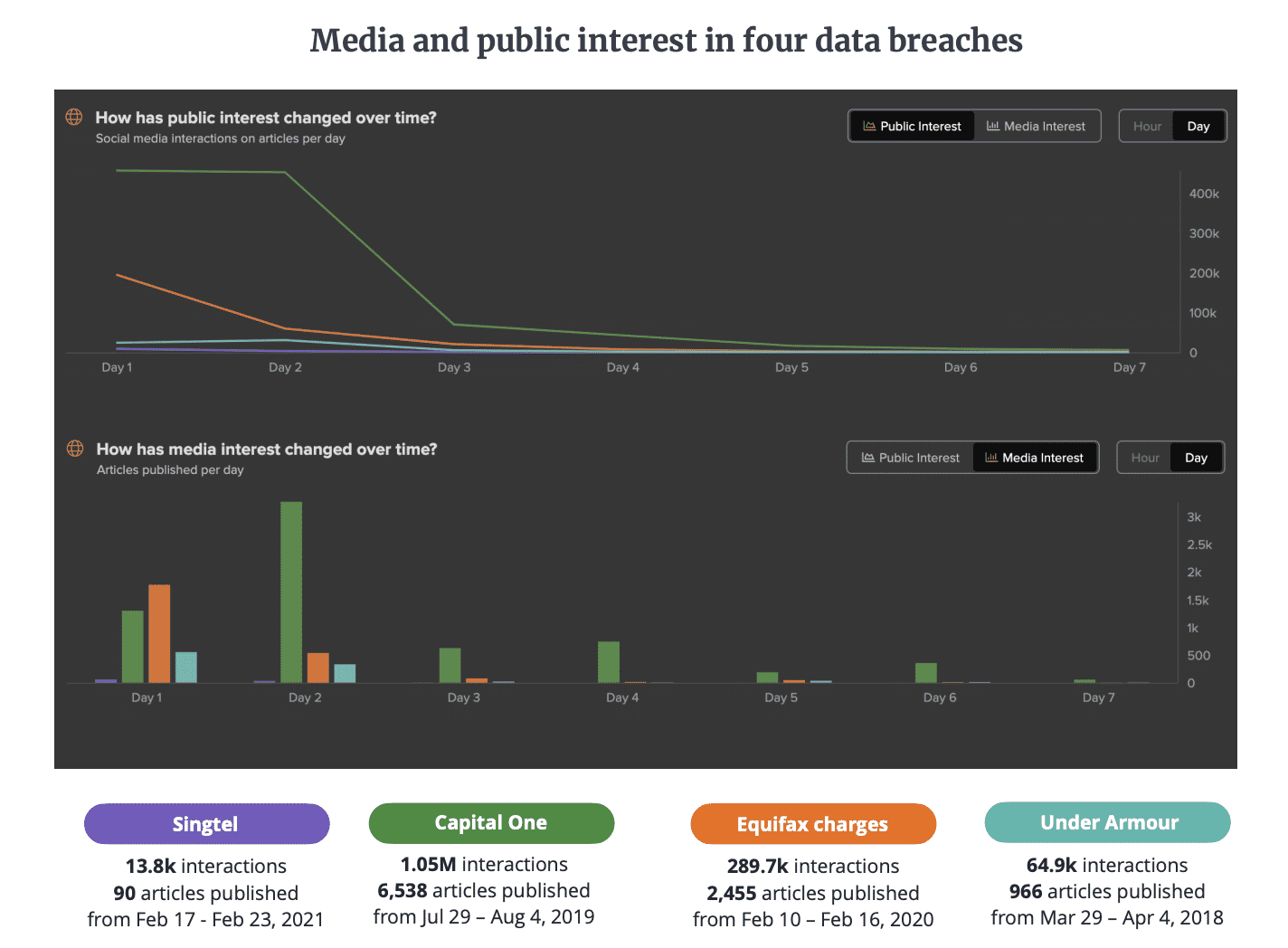
We then broke that down to an hourly look at the Capital One data breach.
The next chart shows how the news broke suddenly across the media and public spheres, with very similar timing of the biggest spikes. Within a couple of hours of the news breaking, there had already been more than 500 articles written, and over 250,000 engagements.
The first stories to receive engagement on the matter came from Bloomberg, but the stories that ended up getting the most engagement were all published within an hour of the news beginning to break and disseminate.
There was a second spike in media interest with outlets doubling down on investigating the hack, including some experts blaming Capital One, but this resonated less with the public than the initial reports did.
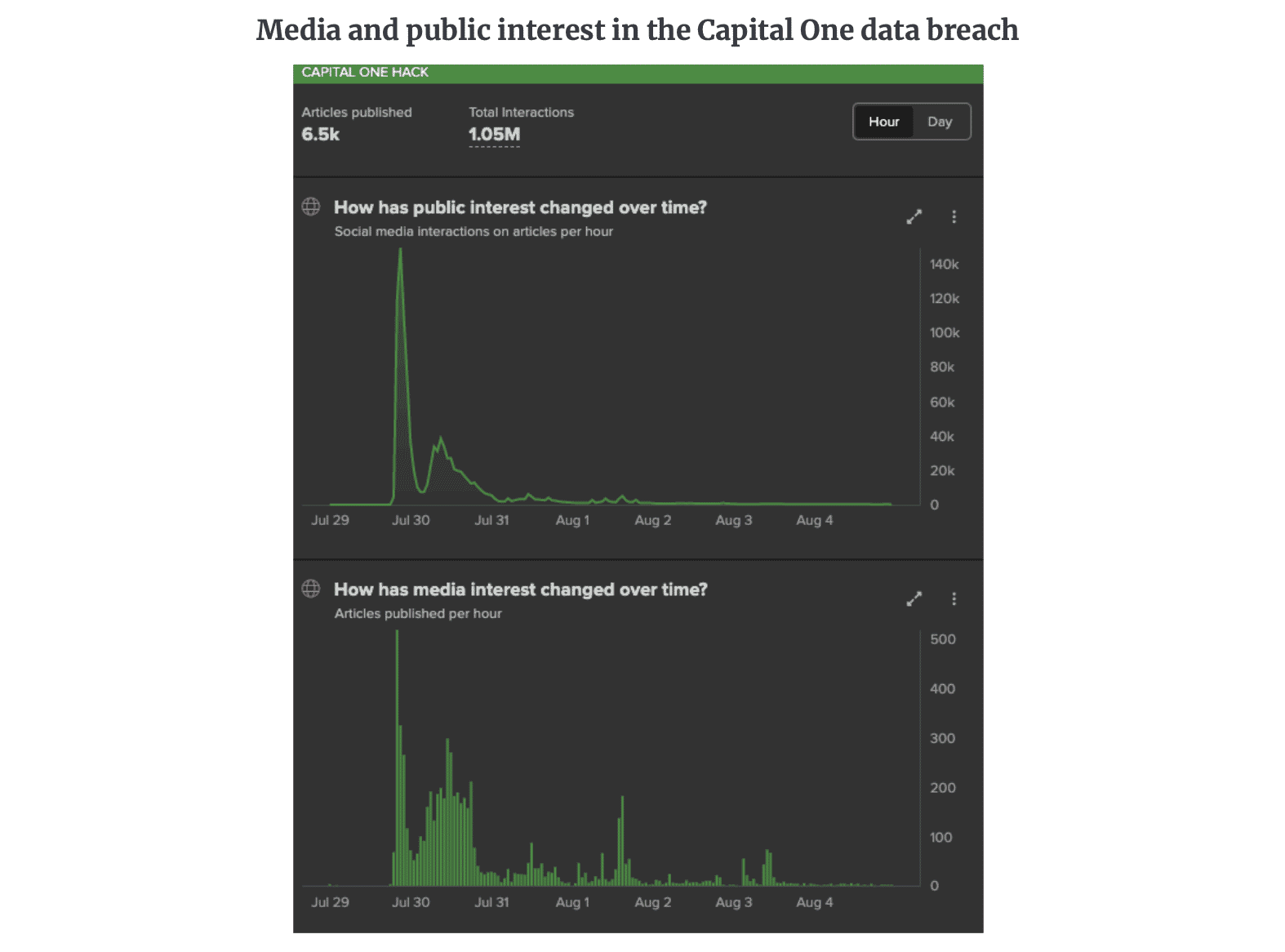
We go into the other data breaches in much greater detail in the report itself, but for the sake of brevity here we are going to move onto the second section, which covers lawsuits.
Lawsuits
Lawsuits can often be a major problem for companies, as they can add to the perception, whether accurate or not, of a legitimized grievance because of an official filing.
Here we looked at four lawsuits faced by companies in recent years in which claims were made about them or their products. Three of them are food-related, including that Burger King cooked an Impossible Whopper alongside meat burgers, that La Croix contains an ingredient that is also found in insecticide, and that Subway tuna contains no actual tuna.
Of these, the Burger King example generated the highest level of public interest, though it took a few days to build after the initial reporting. The final lawsuit example we looked at was about Wells Fargo being named in a suit alleging actions around the Paycheck Protection Program.
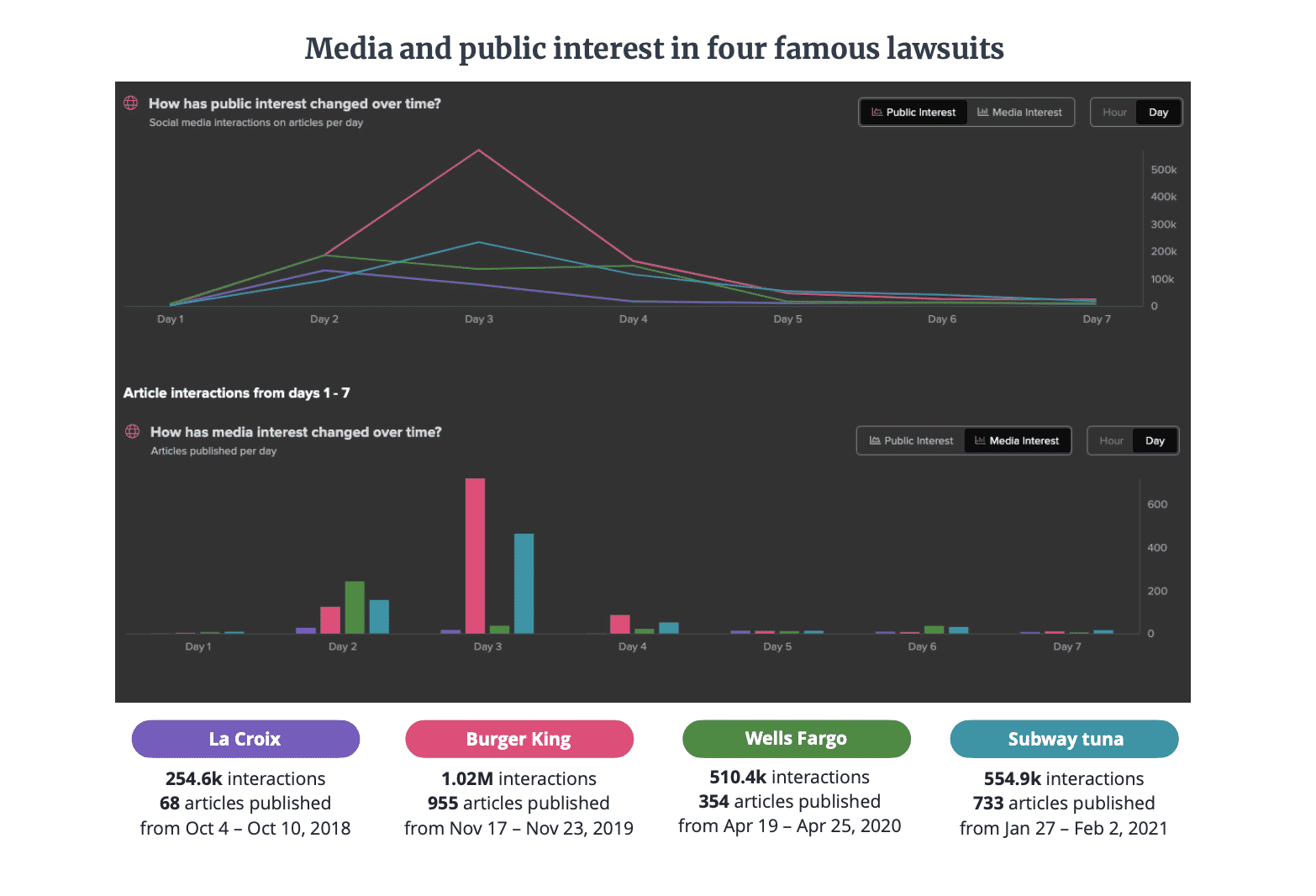
Subway is an extremely illustrative example here, as the company has faced two lawsuits that led to coverage of the brand and a potential reputation crisis in recent months. The first was about an Irish court ruling that Subway’s bread contained too much sugar to officially qualify as bread by the country’s rules, and the second was the aforementioned tuna example.
There is a symmetry to the examples, in that both took a while to build, and only peaked on the second or third day after the initial reporting came about. The bread ruling reached its peak quicker, with both public and media interest hitting their high point on day three, with the tuna lawsuit not hitting its respective peaks until day four.
This is very different to what we saw occur in the data breaches, where the majority of engagement and coverage came within hours of the story breaking.
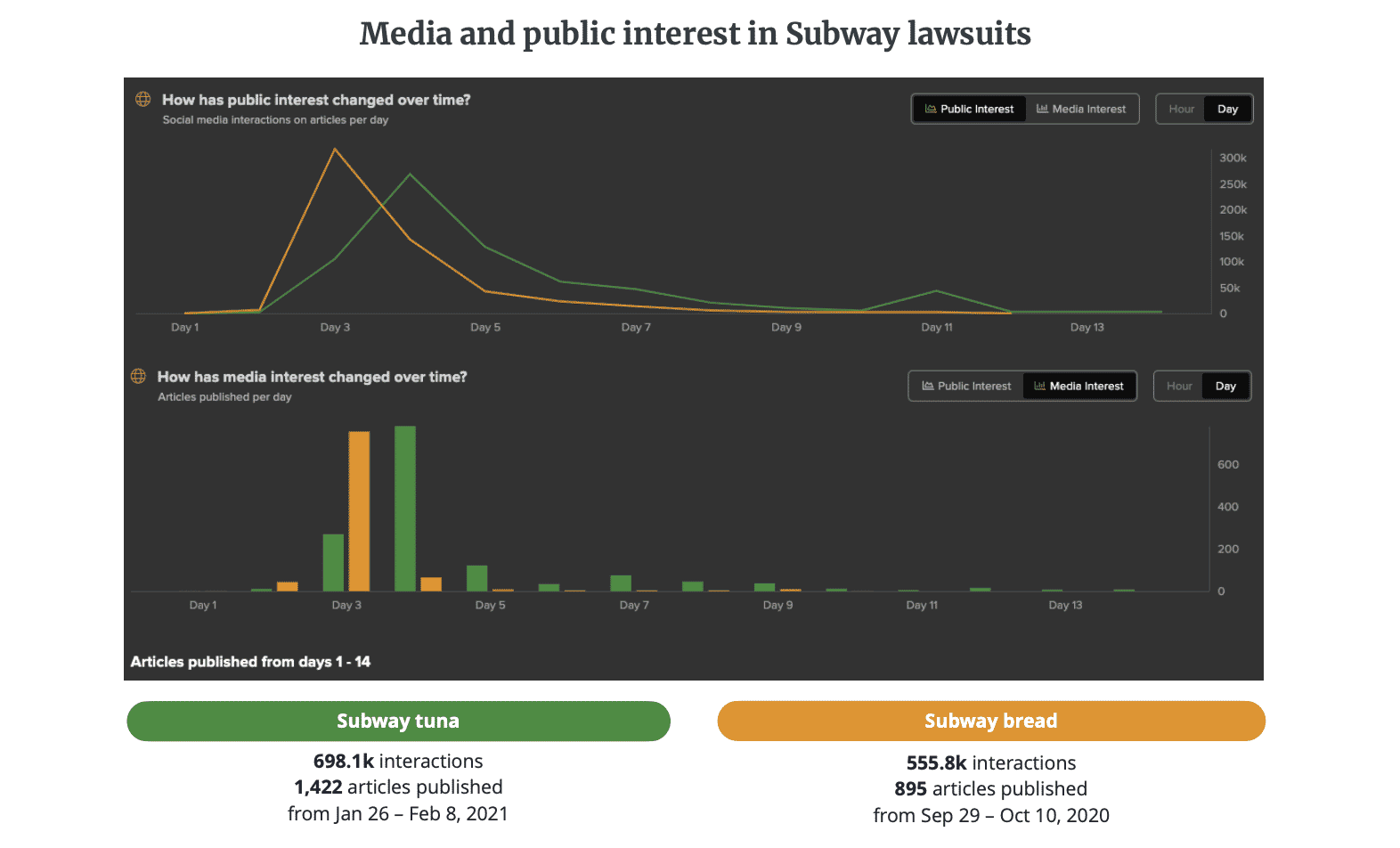
The full report is much more comprehensive, diving into further examples of reputation crisis, and three additional crisis scenarios. If you’d like to read the report in its entirety, you can do so here.
If you’d like to build this kind of report yourself, get in touch here.






